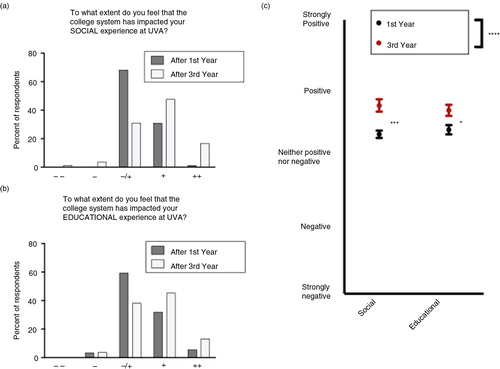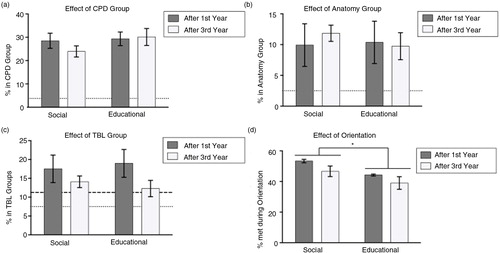Figures & data
Fig. 1. The effect of the University of Virginia college system on the social and education experiences of medical students. The majority of students felt that the college system had neither a positive nor a negative effect after first year, and that it had a positive effect after third year, on both their (a) social and (b) educational experience. (c) Students felt more positive about both the educational and social impacts of the college system after third year.

Fig. 2. Students have more interpersonal relationships with students in their college and this effect increases after third year. (a) Students can identify a higher percentage of their college mates after third year. (b) Students would call upon students in their college more than expected (dotted line) for both social and educational scenarios, and this effect increases after third-year clerkships.

Fig. 3. Students have more social and educational interactions with students from their college-derived small groups than their randomly assigned small groups. (a) Students rely on their CPD group more than expected (dotted line) for both social and educational scenarios equally after first and third years. (b) Students do not rely on their anatomy group more than expected (dotted line). (c) Students do not rely on their TBL group more than expected after either first year (dotted line) or third year (dashed line). (d) Students rely on people they met during orientation more for social than educational scenarios.

